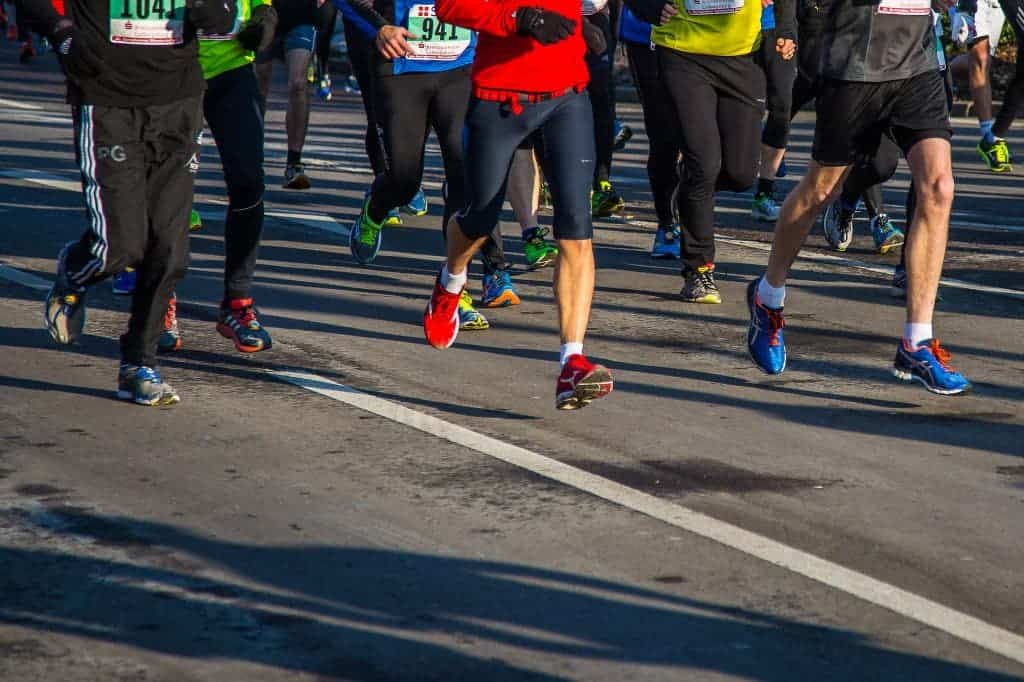Current public health guidelines should be updated to recommend around 5 hours of moderate exercise per week, a new paper reports. This exercise regime, especially if maintained throughout our 30s, 40s, and 50s, can prevent the onset of conditions caused by hypertension later in life.

New research led by the UCSF Benioff Children’s Hospitals reports that the current recommendation of two-and-a-half hours of moderate exercise per week isn’t quite enough to reap maximum benefits. However, updating this to five hours per week could help reduce the risks of medical complications later on in life. More to the point, maintaining this level of physical exercise through to our 50s or older reduces the risk of developing high blood pressure — a condition that may lead to heart attack and stroke.
Running from your problems
“Results from randomized controlled trials and observational studies have shown that exercise lowers blood pressure, suggesting that it may be important to focus on exercise as a way to lower blood pressure in all adults as they approach middle age,” said senior author Kirsten Bibbins-Domingo, MD, Ph.D., of the UCSF Department of Epidemiology and Biostatistics.
“Teenagers and those in their early twenties may be physically active but these patterns change with age. Our study suggests that maintaining physical activity during young adulthood — at higher levels than previously recommended — may be particularly important.”
The study followed roughly 5,000 adults (ages 18 to 30) for 30 years, who were in the Coronary Artery Risk Development in Young Adults (CARDIA) study. They came from urban backgrounds in Birmingham, AL, Chicago, Minneapolis, and Oakland, CA. The study recorded their exercise habits, medical history, alcohol intake, and smoking status. Each participant’s blood pressure, weight, cholesterol, and triglyceride levels were also monitored during this time. It was considered that a participant had hypertension if their blood pressure was 130 over 80 mmHg or higher, in line with the threshold established by the American College of Cardiology/American Heart Association.
Approximately half the participants were Black (51.6%) and the remainder were White. Slightly under half (45.5%) were men.
Black men were found to be the most active group in early adulthood, exercising slightly more than White men, and significantly more than Black and White women. By age 60, Black men’s physical exercise, on average, dropped to under half (from 560 exercise units to around 300 units), which is equivalent to the recommended two-and-a-half hours a week of moderate-intensity activity. Still, this was less than what White men managed to get in (approximately 430 units), slightly more than what White women achieved on average (320 units), and significantly more than what Black women managed by this age (around 200 units per week). However, Black men reported the highest rates of smoking, which may preclude physical activity over time.
Physical activity for White men declined in their twenties and thirties, stabilizing at around age 40. For White women, physical activity hovered around 380 exercise units, decreasing in their thirties, and remaining constant to age 60.
“Although Black male youth may have high engagement in sports, socio-economic factors, neighborhood environments, and work or family responsibilities may prevent continued engagement in physical activity through adulthood,” said first author Jason Nagata, MD, of the UCSF Division of Adolescent and Young Adult Medicine.
Hypertension at age 60 was diagnosed in around 80% to 90% of Black men and women, around 70% of White men, and around 50% of White women. These figures align well with the average reported exercise rates among the different groups, the team explains. Furthermore, it also aligns well with previous research which found that exercise can help lower blood pressure. The results, therefore, showcase the importance of maintaining an active lifestyle that includes at least five hours of moderate exercise per week even as we grow older.
The almost 18% of participants who maintained moderate levels of exercise for at least five hours a week during early adulthood (which is double the current recommended minimum) had an 18% lower likelihood of developing hypertension compared to those who exercised less, further supporting the team’s conclusions.
“Nearly half of our participants in young adulthood had suboptimal levels of physical activity, which was significantly associated with the onset of hypertension, indicating that we need to raise the minimum standard for physical activity,” Nagata said. “This might be especially the case after high school when opportunities for physical activity diminish as young adults transition to college, the workforce and parenthood, and leisure time is eroded.”
The paper has been published in the American Journal of Preventive Medicine, and will be available online shortly.


